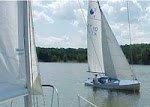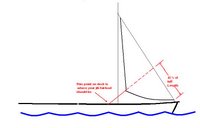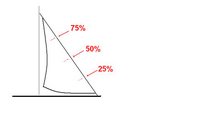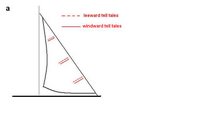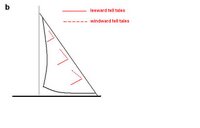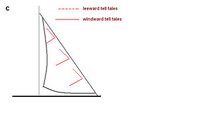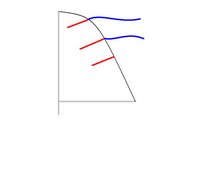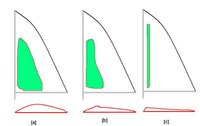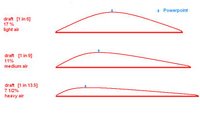A sail is not concerned with the true wind- the wind blowing past an anchored boat for example. What matters is the APPARENT WIND which is a combination of the TRUE WIND AND THE FORWARD MOTION OF THE BOAT.
DANIEL BERNOULLI [1738] first noticed how changes in the flow speed of a fluid [air-water] were related to pressure changes.
............Pressure in air drops as its speed increases
............Pressure in air rises as its speed decreases
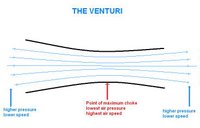
The venturi tube is a funnel through which air passes. If it is the right size and shape, it improves the air flow by increasing its speed, lowering its pressure and ironing out turbulence. Our sketch shows a normal venturi- note, however, that the gap between jib and mainsail CAN HAVE A VENTURI EFFECT.

[1] Lift is created when a fluid flows around an asymmetrical object because more flow is diverted to one side causing a drop in pressure.
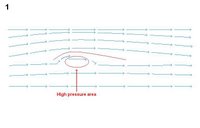
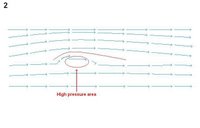
[2] A properly shaped asymmetrical object, a sail for example, diverts so much fluid [air] to the low pressure side that the flow over the other side will be slower than free stream and thus the pressure higher; SO LIFT IS CREATED.
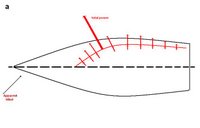
The sum of windward pressure forces and leeward suction forces can be shown by ONE ARROW which shows the strength and direction of the total power by its length and the direction it points.
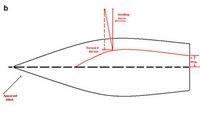
We resolve total power into heeling force and forward thrust. On windward sailing, heeling force is much greater than forward thrust.

Sail angle has a great effect on forward thrust. Total power is the same but THRUST IS INCREASED 50% by easing sail [boom] by 5degrees. HEELING FORCE IS ALSO DECREASED.
INTERACTION OF TWO SAILS
We noted on our diagram [2] of a mainsail that the convex curve created a narrow channel between the sail and the free air stream. This caused the air mass to speed up. This increase in speed caused a DECREASE IN PRESSURE which is THE MAJOR FORCE IN MOVING A BOAT TO WINDWARD.
Now if we add a genoa that overlaps the lee side of the mainsail, we introduce a stronger lee-side barrier than the free air stream. There is more squeezing of the air between the after part of the genoa and the convex lee surface of the mainsail. The result is a greater decrease in pressure and thus MORE THRUST. The constricted area is known as the slot.
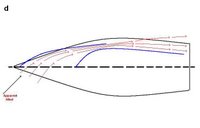
Good slot - just enough squeezing of air.

Slot too closed - too much squeezing of air [main is backwinded-luff].
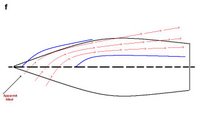
Slot too open - not enough squeezing of air.
In diagram [d] with a good slot the air flow from the windward side of the genoa adds even more air to the air on the lee side of the main and thus increases the main's total power.
